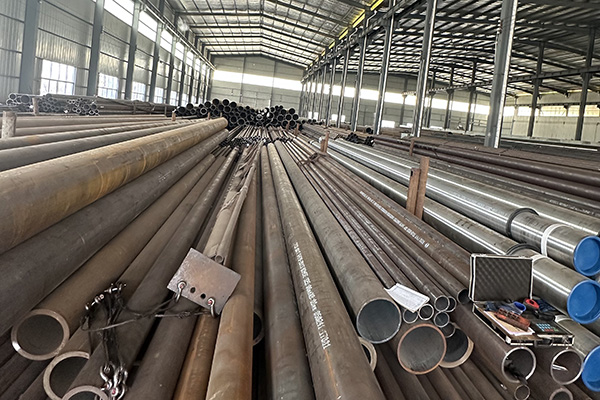

Pre-Heat Treatment Requirements for Welding Alloy Steel Pipes
Pre-heat treatment is a critical step in the welding process of alloy steel pipes. Its purpose is to reduce thermal stress, prevent cracking, and ensure a sound metallurgical bond between welded sections. The need for pre-heating depends on the alloy composition, pipe thickness, welding method, and service conditions. Ignoring proper pre-heat procedures can result in weld defects such as hydrogen-induced cracking, reduced toughness, or premature failure during service.
1. Purpose of Pre-Heat Treatment
Reduce the risk of hydrogen-induced cracking (HIC): Pre-heating slows down the cooling rate after welding, allowing hydrogen to diffuse out of the weld metal and heat-affected zone (HAZ).
Lower thermal gradients: Pre-heating minimizes the temperature difference between the weld area and the surrounding material, reducing residual stresses and distortion.
Improve weldability: Certain alloying elements, such as chromium and molybdenum, can increase hardness and crack sensitivity. Pre-heating helps in achieving better fusion and weld ductility.
2. Typical Pre-Heat Temperatures
The required pre-heat temperature varies depending on the alloy type and wall thickness:
Low-alloy steels (e.g., ASTM A335 P1, P11): Typically require pre-heating in the range of 150–300°C
Higher-alloy grades (e.g., ASTM A335 P22, P91): May require pre-heating between 200–400°C
For thicker sections (greater than 25 mm), higher pre-heat temperatures are generally applied to reduce the risk of cold cracking.
3. Heating Methods
Pre-heating should be uniform and controlled to avoid uneven expansion and thermal shock. Common methods include:
Induction heating
Electric resistance heating blankets
Gas torches (for small-diameter or field applications)
Temperature should be measured using thermocouples, temperature crayons, or infrared thermometers to ensure accuracy.
4. Pre-Heat Duration and Coverage
The pre-heated area should extend a minimum distance—typically 75 mm or more—from both sides of the weld joint. Pipes should be brought up to the target pre-heat temperature and held at that temperature until welding begins. The pipe must not be allowed to cool below the minimum pre-heat temperature between passes.
5. Influence of Environmental Conditions
In cold or windy environments, additional insulation or windbreaks may be required to maintain consistent pre-heat temperatures. Sudden cooling due to drafts can lead to uneven heating and localized cracking.
6. Integration with Post-Weld Heat Treatment (PWHT)
Pre-heating is often used in combination with post-weld heat treatment, especially for alloy steels sensitive to temper embrittlement or creep failure. Pre-heat helps reduce hard microstructures in the HAZ, while PWHT further relieves stress and restores toughness.
Conclusion
Pre-heat treatment is a crucial welding requirement for alloy steel pipes, especially for medium- to high-alloy grades and thicker sections. By controlling temperature before welding, manufacturers can significantly reduce weld cracking risks, improve mechanical properties, and ensure long-term reliability of welded joints in demanding service conditions.
References:
ASME Section IX – Welding and Brazing Qualifications
AWS D10.8 – Recommended Practices for Welding of Chromium-Molybdenum Steel Piping and Tubing
ASTM A335 – Standard Specification for Seamless Ferritic Alloy-Steel Pipe for High-Temperature Service
API RP 582 – Welding Guidelines for the Chemical, Oil, and Gas Industries
ASM Handbook, Volume 6 – Welding, Brazing, and Soldering





